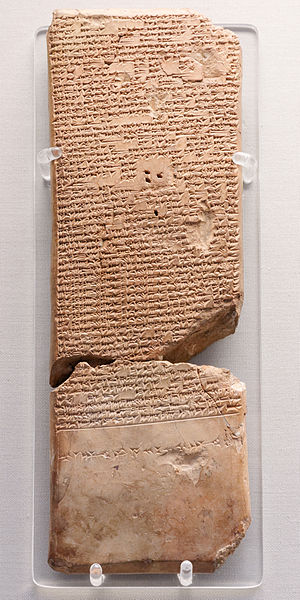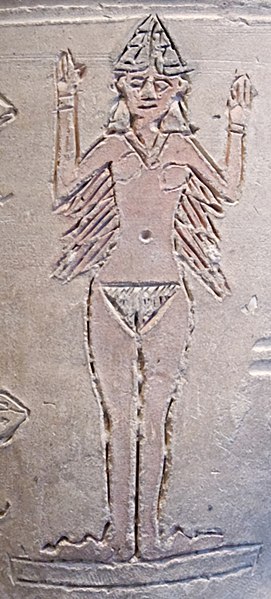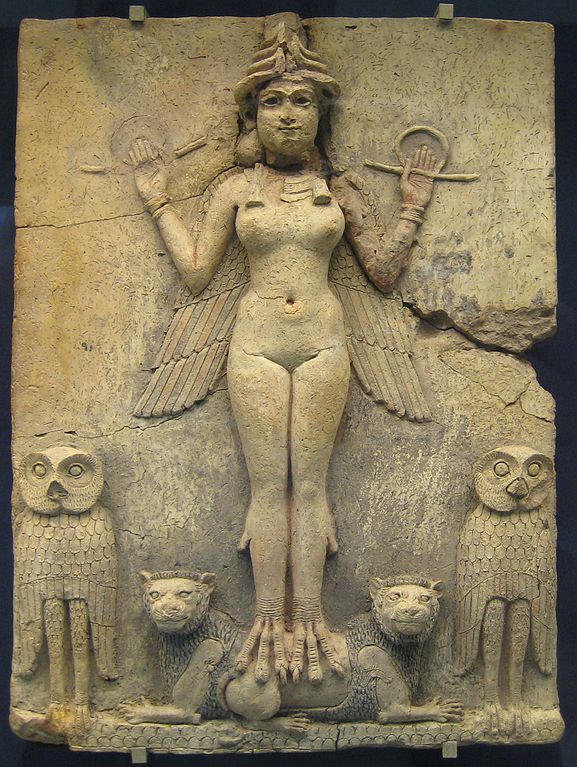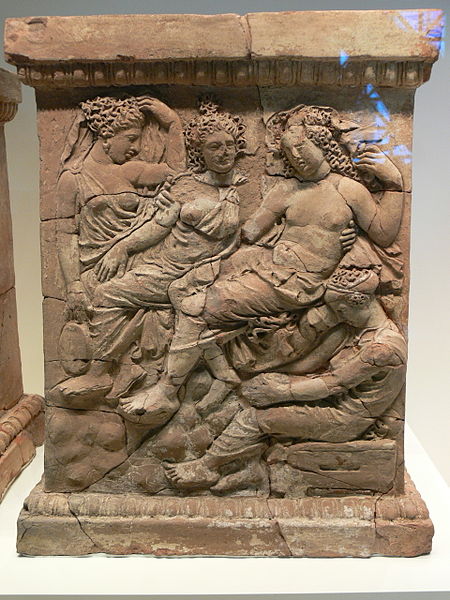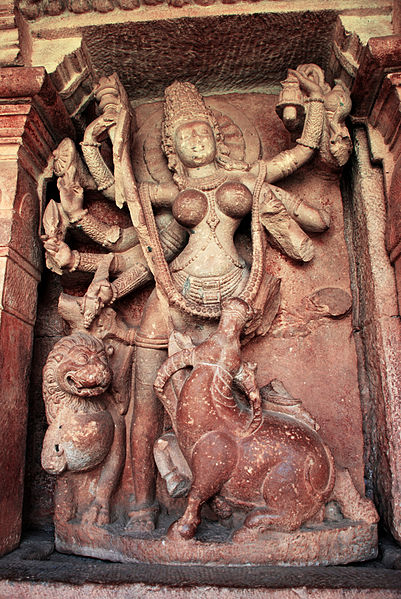
| INANNA A lot about Eve i.e. Inanna is written by Lieutenant Colonel Laurence Austine Waddell in his books. The new studies which have come out I am writing it here, excluding mythology and myths.
Goddess Ishtar on an Akkadian Empire seal, 2350 – 2150 BC. She is equipped with weapons on her back, has a horned helmet, and is trampling a lion held on a leash Symbol : Hook-shaped knot of reeds, eight-pointed star, lion, rosette, dove
Inanna is an ancient Mesopotamian goddess associated with love, beauty, sex, war, justice and political power. She was originally worshiped in Aratta and Sumer under the name "Inanna", and was later worshipped by the Akkadians, Babylonians, and Assyrians under the name Ishtar. She was known as the "Queen of Heaven" and was the patron goddess of the Eanna temple at the city of Uruk, which was her main cult center. She was associated with the planet Venus and her most prominent symbols included the lion and the eight-pointed star. Her sukkal, or personal attendant, was the goddess Ninshubur (who later became the male deity Papsukkal).
Inanna was worshiped in Sumer at least as early as the Uruk period (c. 4000 BC – c. 3100 BC), but she had little cult before the conquest of Sargon of Akkad. During the post-Sargonic era, she became one of the most widely venerated deities in the Sumerian pantheon, with temples across Mesopotamia. The cult of Inanna/Ishtar, which may have been associated with a variety of sexual rites, was continued by the East Semitic-speaking people (Akkadians, Assyrians and Babylonians) who succeeded and absorbed the Sumerians in the region. She was especially beloved by the Assyrians, who elevated her to become the highest deity in their pantheon, ranking above their own national god Ashur. Inanna/Ishtar is alluded to in the Hebrew Bible and she greatly influenced the Phoenician goddess Astoreth, who later influenced the development of the Greek goddess Aphrodite. Her cult continued to flourish until its gradual decline between the first and sixth centuries AD in the wake of Christianity, though it survived in parts of Upper Mesopotamia among Assyrian communities as late as the eighteenth century.
Etymology :
Inanna receiving offerings on the Uruk Vase, circa 3200 - 3000 BC Inanna and Ishtar were originally separate, unrelated deities, but they were equated with each other during the reign of Sargon of Akkad and came to be regarded as effectively the same goddess under two different names.
The name Ishtar occurs as an element in personal names from both the pre-Sargonic and post-Sargonic eras in Akkad, Assyria, and Babylonia. It is of Semitic derivation and is probably etymologically related to the name of the West Semitic god Attar, who is mentioned in later inscriptions from Ugarit and southern Arabia. The morning star may have been conceived as a male deity who presided over the arts of war and the evening star may have been conceived as a female deity who presided over the arts of love. Among the Akkadians, Assyrians, and Babylonians, the name of the male god eventually supplanted the name of his female counterpart, but, due to extensive syncretism with Inanna, the deity remained as female, although her name was in the masculine form.
Origins and development :
The Uruk Vase (Warka Vase), depicting votive offerings to Inanna (3200-3000 BC). As early as the Uruk period (c. 4000 – c. 3100 BC), Inanna was already associated with the city of Uruk. During this period, the symbol of a ring-headed doorpost was closely associated with Inanna. The famous Uruk Vase (found in a deposit of cult objects of the Uruk III period) depicts a row of naked men carrying various objects, including bowls, vessels, and baskets of farm products, and bringing sheep and goats to a female figure facing the ruler. The female stands in front of Inanna's symbol of the two twisted reeds of the doorpost, while the male figure holds a box and stack of bowls, the later cuneiform sign signifying the En, or high priest of the temple.
Seal impressions from the Jemdet Nasr period (c. 3100 – c. 2900 BC) show a fixed sequence of symbols representing various cities, including those of Ur, Larsa, Zabalam, Urum, Arina, and probably Kesh. This list probably reflects the report of contributions to Inanna at Uruk from cities supporting her cult. A large number of similar seals have been discovered from phase I of the Early Dynastic period (c. 2900 – c. 2350 BC) at Ur, in a slightly different order, combined with the rosette symbol of Inanna. These seals were used to lock storerooms to preserve materials set aside for her cult.
Various inscriptions in the name of Inanna are known, such as a bead in the name of King Aga of Kish circa 2600 BC, or a tablet by King Lugal-kisalsi circa 2400 BC :
"For An, king of all the lands, and for Inanna, his mistress, Lugal-kisalsi, king of Kish, built the wall of the courtyard."
- Inscription of Lugal-kisalsi.
Worship :
Inanna's symbol: the reed ring-post
Emblem of goddess Inanna, circa 3000 BCE
Ring posts of Inanna on each side of a temple door, with naked devotee offering libations
On the Warka Vase
Cuneiform logogram "Inanna" Inanna's symbol is a ring post made of reed, an ubiquitous building material in Sumer. It was often beribboned and positionned at the entrance of temples, and marked the limit between the profane and the sacred realms. The design of the emblem was simplified between 3000-2000 BCE to become the cuneiform logogram for Inanna, generally preceded by the symbol for "deity".
Ancient Sumerian statuette of two gala priests, dating to c. 2450 BC, found in the temple of Inanna at Mari During the Pre-Sargonic era, the cult of Inanna was rather limited, but, after the reign of Sargon, she quickly became one of the most widely venerated deities in the Sumerian pantheon. She had temples in Nippur, Lagash, Shuruppak, Zabalam, and Ur, but her main cult center was the Eanna temple in Uruk, whose name means "House of Heaven", The original patron deity of this fourth-millennium BC city was probably An. After its dedication to Inanna, the temple seems to have housed priestesses of the goddess. During later times, while her cult in Uruk continued to flourish, Ishtar also became particularly worshipped in the Upper Mesopotamian kingdom of Assyria (modern northern Iraq, northeast Syria and southeast Turkey), especially in the cities of Nineveh, Aššur and Arbela (modern Erbil). During the reign of the Assyrian king Assurbanipal, Ishtar rose to become the most important and widely venerated deity in the Assyrian pantheon, surpassing even the Assyrian national god Ashur.
As Ishtar became more prominent, several lesser or regional deities were assimilated into her, including Aya (the wife of Utu), Anatu (Antu, a consort of Anu), Anunitu (an Akkadian light goddess), Agasayam (a warrior goddess), Irnini (the goddess of cedar forests in the Lebanese mountains), Kilili or Kulili (the symbol of desirable women), Sahirtu (the messenger of lovers), Kir-gu-lu (the bringer of rain), and Sarbanda (the personification of sovereignty).
Individuals who went against the traditional gender binary were heavily involved in the cult of Inanna. During Sumerian times, a set of priests known as gala worked in Inanna's temples, where they performed elegies and lamentations. Men who became gala sometimes adopted female names and their songs were composed in the Sumerian eme-sal dialect, which, in literary texts, is normally reserved for the speech of female characters.
During the Akkadian Period, kurgarru and assinnu were servants of Ishtar who dressed in female clothing and performed war dances in Ishtar's temples. Gwendolyn Leick, an anthropologist known for her writings on Mesopotamia, has compared these individuals to the contemporary Indian hijra (hijda).
According to the early scholar Samuel Noah Kramer, towards the end of the third millennium BC, kings of Uruk may have established their legitimacy by taking on the role of the shepherd Dumuzid, Inanna's consort. This ritual lasted for one night on the tenth day of the Akitu, the Sumerian new year festival, which was celebrated annually at the spring equinox.
Women across the ancient Near East worshipped Ishtar by dedicating to her cakes baked in ashes (known as kaman tumri). A dedication of this type is described in an Akkadian hymn. Several clay cake molds discovered at Mari are shaped like naked women with large hips clutching their breasts. Some scholars have suggested that the cakes made from these molds were intended as representations of Ishtar herself.
(The ancient Near East was the home of early civilizations within a region roughly corresponding to the modern Middle East: Mesopotamia (modern Iraq, southeast Turkey, southwest Iran, northeastern Syria and Kuwait), ancient Egypt, ancient Iran (Elam, Media, Parthia and Persia), Anatolia/Asia Minor and the Armenian Highlands (Turkey's Eastern Anatolia Region, Armenia, northwestern Iran, southern Georgia, and western Azerbaijan), the Levant (modern Syria, Lebanon, Israel, Palestine, and Jordan), Cyprus and the Arabian Peninsula. The ancient Near East is studied in the fields of Ancient Near East studies, Near Eastern archaeology and ancient history.
The history of the ancient Near East begins with the rise of Sumer in the 4th millennium BC, though the date it ends varies.)
Iconography
:
The eight-pointed star was Inanna/Ishtar's most common symbol. Here it is shown alongside the solar disk of her brother Shamash (Sumerian Utu) and the crescent moon of her father Sin (Sumerian Nanna) on a boundary stone of Meli-Shipak II, dating to the twelfth century BC.
Lions
were one of Inanna/Ishtar's primary symbols. The lion above comes
from the Ishtar Gate, the eighth gate to the inner city of Babylon,
which was constructed in around 575 BC under the orders of Nebuchadnezzar
II.
Inanna's cuneiform ideogram was a hook-shaped twisted knot of reeds, representing the doorpost of the storehouse, a common symbol of fertility and plenty. The rosette was another important symbol of Inanna, which continued to be used as a symbol of Ishtar after their syncretism. During the Neo-Assyrian Period (911 – 609 BC), the rosette may have actually eclipsed the eight-pointed star and become Ishtar's primary symbol. The temple of Ishtar in the city of Aššur was adorned with numerous rosettes.
Inanna/Ishtar was associated with lions, which the ancient Mesopotamians regarded as a symbol of power. Her associations with lions began during Sumerian times; a chlorite bowl from the temple of Inanna at Nippur depicts a large feline battling a giant snake and a cuneiform inscription on the bowl reads "Inanna and the Serpent", indicating that the cat is supposed to represent the goddess. During the Akkadian Period, Ishtar was frequently depicted as a heavily armed warrior goddess with a lion as one of her attributes.
Doves were also prominent animal symbols associated with Inanna/Ishtar. Doves are shown on cultic objects associated with Inanna as early as the beginning of the third millennium BC. Lead dove figurines were discovered in the temple of Ishtar at Aššur, dating to the thirteenth century BC and a painted fresco from Mari, Syria shows a giant dove emerging from a palm tree in the temple of Ishtar, indicating that the goddess herself was sometimes believed to take the form of a dove.
As
the planet Venus :
Inanna in her aspect as Anunitu was associated with the eastern fish of the last of the zodiacal constellations, Pisces. Her consort Dumuzi was associated with the contiguous first constellation, Aries.
Babylonian terracotta relief of Ishtar from Eshnunna (early second millennium BC)
Life-sized statue of a goddess, probably Ishtar, holding a vase from Mari, Syria (eighteenth century BC)
Terracotta relief of Ishtar with wings from Larsa (second millennium BC)
Statuette of woman clutching her breasts, possibly representing Ishtar, from Susa (c. 1300 – c. 1100 BC)
Stele showing Ishtar holding a bow from Ennigaldi-Nanna's museum (eighth century BC)
Hellenized bas-relief sculpture of Ishtar standing with her servant from Palmyra (third century AD) Character :
Ancient Akkadian cylinder seal depicting Inanna resting her foot on the back of a lion while Ninshubur stands in front of her paying obeisance, c. 2334 – c. 2154 BC The Sumerians worshipped Inanna as the goddess of both warfare and love. Unlike other gods, whose roles were static and whose domains were limited, the stories of Inanna describe her as moving from conquest to conquest.
Inanna was also worshipped as one of the Sumerian war deities. One of her hymns declares: "She stirs confusion and chaos against those who are disobedient to her, speeding carnage and inciting the devastating flood, clothed in terrifying radiance. It is her game to speed conflict and battle, untiring, strapping on her sandals." Battle itself was occasionally referred to as the "Dance of Inanna".
Akkadian cylinder seal from c. 2300 BC or thereabouts depicting the deities Inanna, Utu, Enki, and Isimud
Copy of the Akkadian version of Ishtar's Descent into the Underworld from the Library of Assurbanipal, currently held in the British Museum in London, England
Depiction of Inanna/Ishtar from the Ishtar Vase, dating to the early second millennium BC (Mesopotamian, Terracotta with cut, moulded, and painted decoration, from Larsa)
The "Burney Relief", which is believed to represent either Ishtar or her older sister Ereshkigal (c. 19th or 18th century BC) Later
influence :
The Greek myth of Aphrodite and Adonis, shown here on this altar from the Greek city of Taras in Magna Graecia, dating to c. 400-375 BC, is derived from the Mesopotamian myth of Inanna and Dumuzid.
Statue
from the Aihole temple of the Hindu goddess Durga, heavily armed
with a lion at her side, slaying the buffalo demon. Durga's warrior
aspects and associations with lions may be derived from Inanna.
The Song of Songs bears strong similarities to the Sumerian love poems involving Inanna and Dumuzid, particularly in its usage of natural symbolism to represent the lovers' physicality. Song of Songs 6:10 ("Who is she that looketh forth as the morning, fair as the moon, clear as the sun, and terrible as an army with banners?") is almost certainly a reference to Inanna/Ishtar.
The cult of Inanna/Ishtar also heavily influenced the cult of the Phoenician goddess Astoreth. The Phoenicians introduced Astarte to the Greek islands of Cyprus and Cythera, where she either gave rise to or heavily influenced the Greek goddess Aphrodite. Aphrodite took on Inanna/Ishtar's associations with sexuality and procreation. Furthermore, she was known as Ourania, which means "heavenly", a title corresponding to Inanna's role as the Queen of Heaven.
Early artistic and literary portrayals of Aphrodite are extremely similar to Inanna/Ishtar. Aphrodite was also a warrior goddess; the second-century AD Greek geographer Pausanias records that, in Sparta, Aphrodite was worshipped as Aphrodite Areia, which means "warlike". He also mentions that Aphrodite's most ancient cult statues in Sparta and on Cythera showed her bearing arms. Modern scholars note that Aphrodite's warrior-goddess aspects appear in the oldest strata of her worship and see it as an indication of her Near Eastern origins. Aphrodite also absorbed Ishtar's association with doves, which were sacrificed to her alone. The Greek word for "dove" was peristerá, which may be derived from the Semitic phrase perah Ištar, meaning "bird of Ishtar". The myth of Aphrodite and Adonis is derived from the story of Inanna and Dumuzid.
Classical scholar Charles Penglase has written that Athena, the Greek goddess of wisdom and defensive warfare, resembles Inanna's role as a "terrifying warrior goddess". Others have noted that the birth of Athena from the head of her father Zeus could be derived from Inanna's descent into and return from the Underworld.
The cult of Inanna may also have influenced the deities Ainina and Danina of the Caucasian Iberians mentioned by the medieval Georgian Chronicles. Anthropologist Kevin Tuite argues that the Georgian goddess Dali was also influenced by Inanna, noting that both Dali and Inanna were associated with the morning star, both were characteristically depicted nude, both were associated with gold jewelry, both were associated with human and animal fertility and dangerous women. The Hindu goddess Durga may also have been influenced by Inanna. Like Inanna, Durga was envisioned as a warrior goddess with a fierce temper who slew demons. Both goddesses were portrayed riding on the backs of lions and both were associated with the destruction of the wicked. Like Inanna, Durga.
Traditional Mesopotamian religion began to gradually decline between the third and fifth centuries AD as ethnic Assyrians converted to Christianity. Nonetheless, the cult of Ishtar.
The cult of Ishtar still existed in Mardin as late as the eighteenth century. Early Christians in the Middle East assimilated elements of Ishtar into the cult of the Virgin Mary.
Source :
https://en.wikipedia.org/wiki/ |
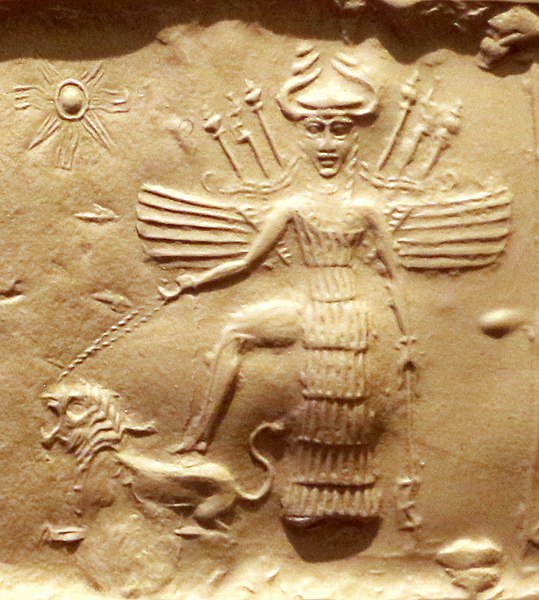
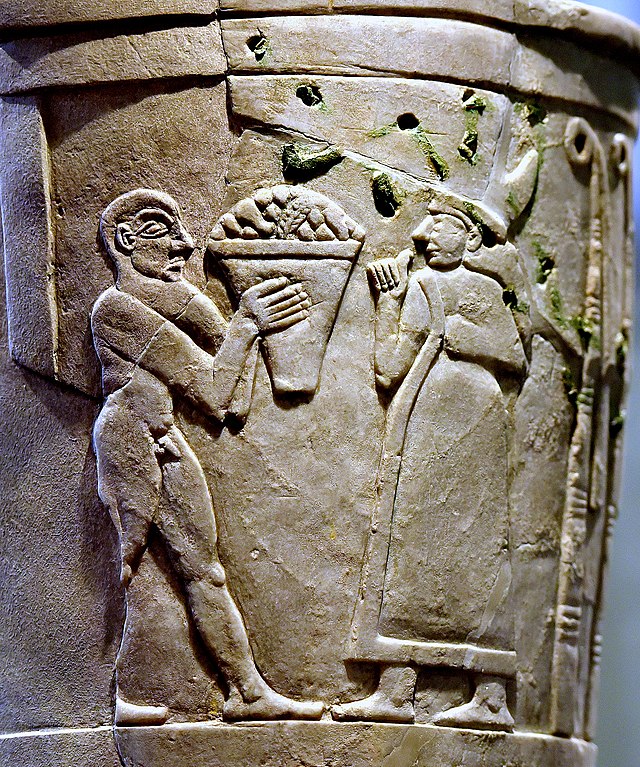
.jpg)
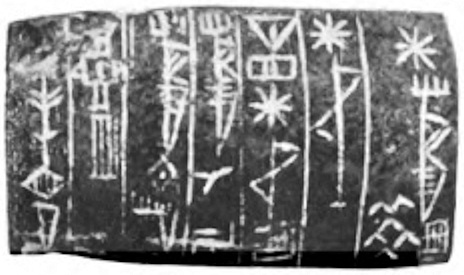
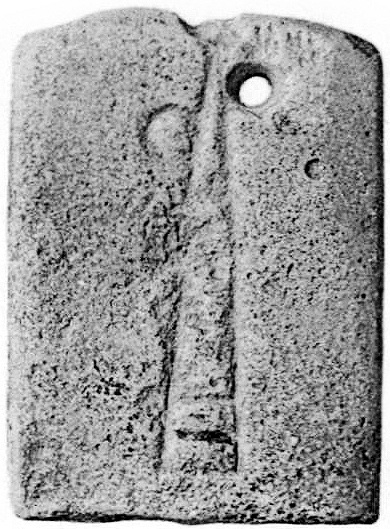
.jpg)
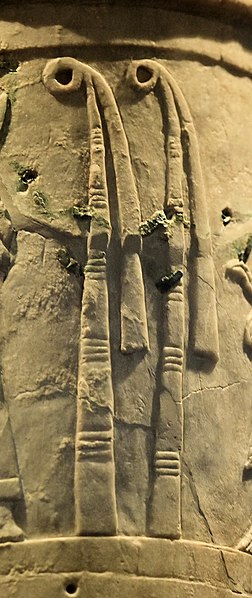
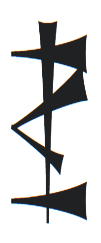
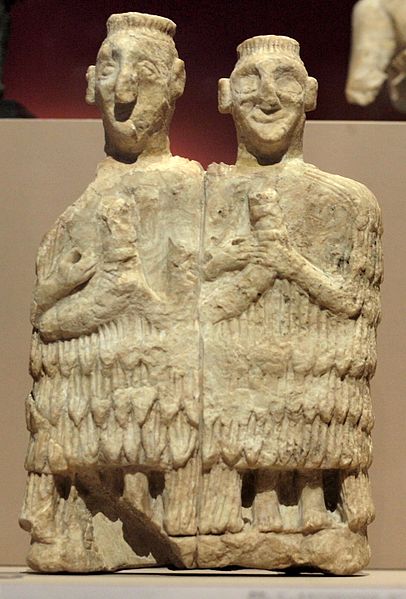
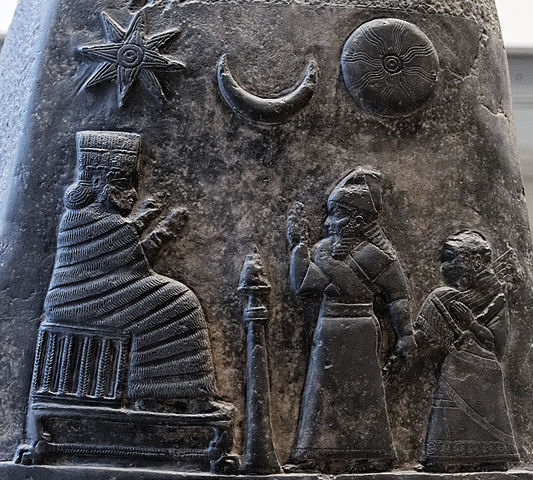
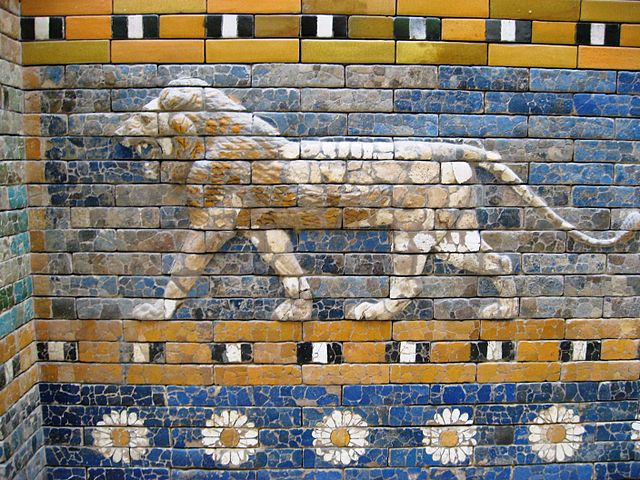
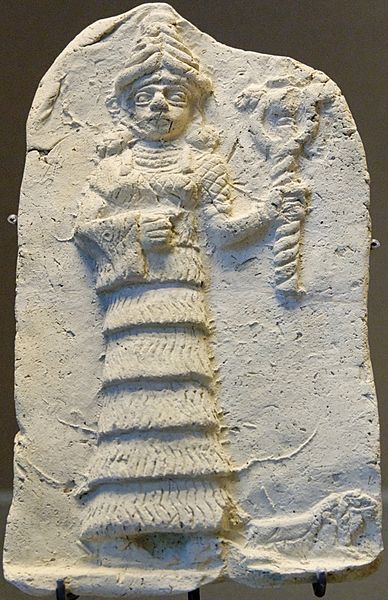
.jpg)
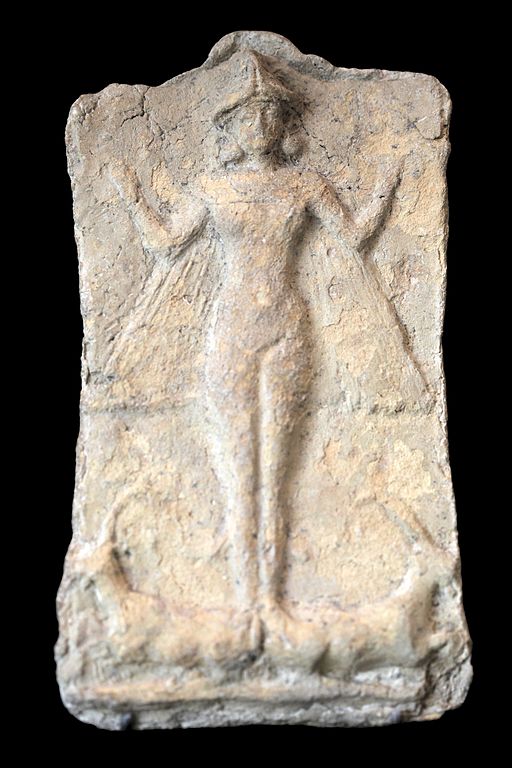
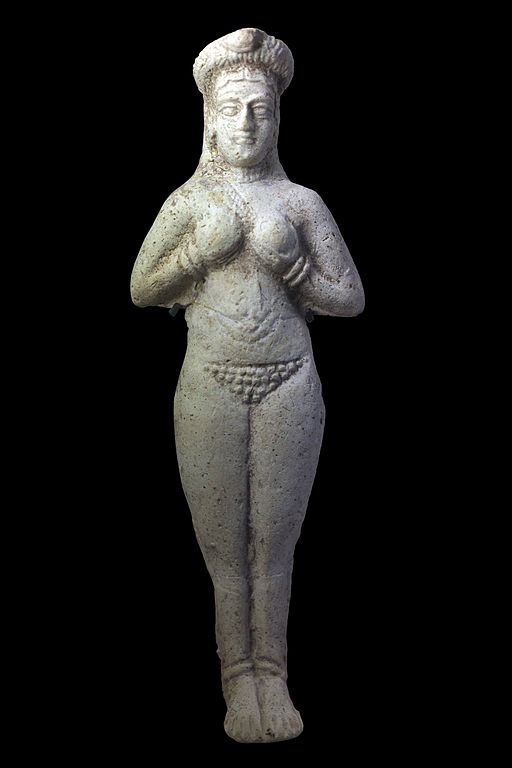
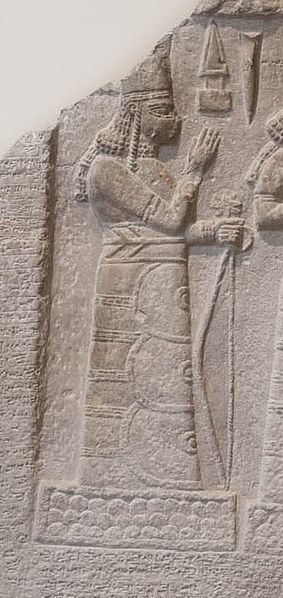
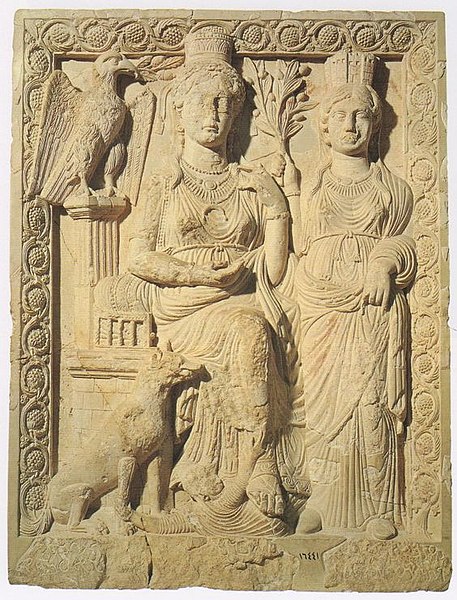
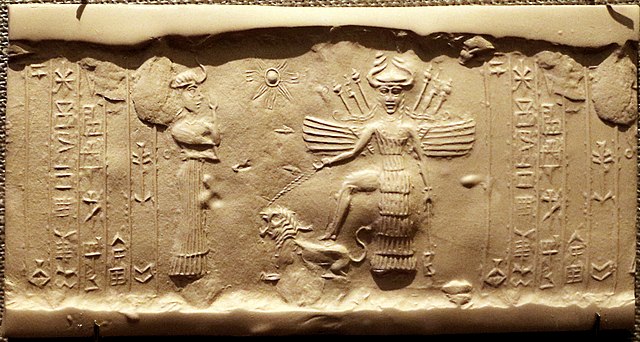
_-_EnKi_(Sumerian).jpg)
